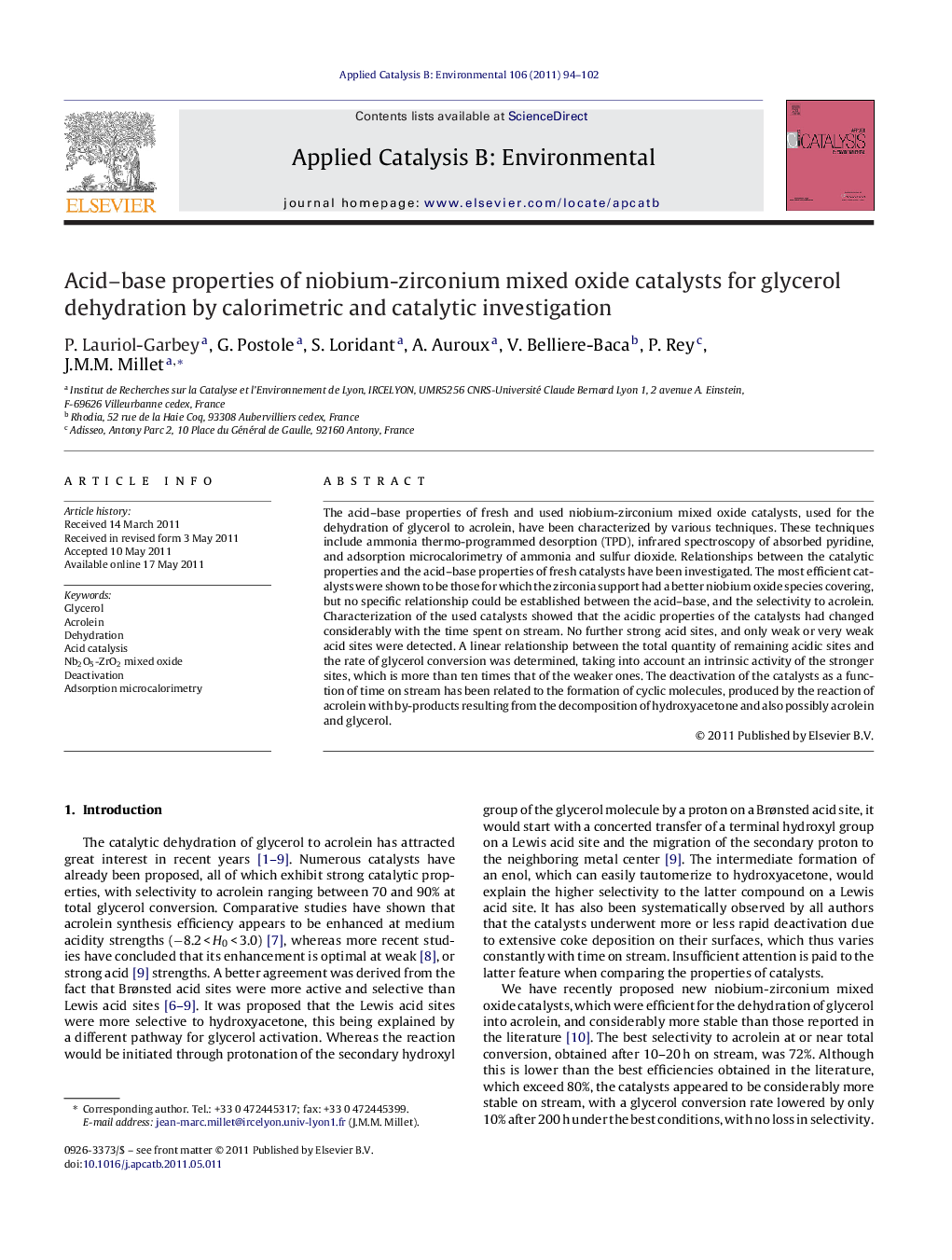| کد مقاله | کد نشریه | سال انتشار | مقاله انگلیسی | نسخه تمام متن |
|---|---|---|---|---|
| 47049 | 46457 | 2011 | 9 صفحه PDF | دانلود رایگان |

The acid–base properties of fresh and used niobium-zirconium mixed oxide catalysts, used for the dehydration of glycerol to acrolein, have been characterized by various techniques. These techniques include ammonia thermo-programmed desorption (TPD), infrared spectroscopy of absorbed pyridine, and adsorption microcalorimetry of ammonia and sulfur dioxide. Relationships between the catalytic properties and the acid–base properties of fresh catalysts have been investigated. The most efficient catalysts were shown to be those for which the zirconia support had a better niobium oxide species covering, but no specific relationship could be established between the acid–base, and the selectivity to acrolein. Characterization of the used catalysts showed that the acidic properties of the catalysts had changed considerably with the time spent on stream. No further strong acid sites, and only weak or very weak acid sites were detected. A linear relationship between the total quantity of remaining acidic sites and the rate of glycerol conversion was determined, taking into account an intrinsic activity of the stronger sites, which is more than ten times that of the weaker ones. The deactivation of the catalysts as a function of time on stream has been related to the formation of cyclic molecules, produced by the reaction of acrolein with by-products resulting from the decomposition of hydroxyacetone and also possibly acrolein and glycerol.
Figure optionsDownload as PowerPoint slideHighlights
► Zr and Nb mixed oxides are selective catalysts for dehydration of glycerol to acrolein in gas phase.
► Characterization of used catalysts showed that active sites are weak acid Brønsted sites.
► Linear relationship between weak acidic site number and rate of glycerol conversion was evidenced.
► Deactivation of catalysts with time on stream was related to the formation of cyclic molecules.
► Cyclic molecules are formed by reaction of acrolein with hydroxyacetone decomposition products.
Journal: Applied Catalysis B: Environmental - Volume 106, Issues 1–2, 21 July 2011, Pages 94–102